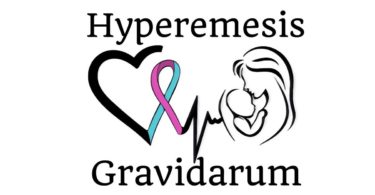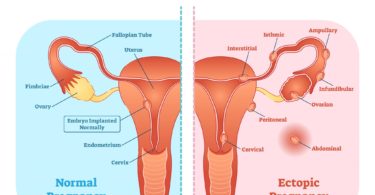Pregnancy can be diagnosed by history taking and clinical examination. The various signs and symptoms of pregnancy, as well as laboratory investigations, help in confirming pregnancy.
| First trimester | Symptoms | Signs | Investigations |
| Second trimester | Symptoms | Signs | Investigations |
| Third trimester | Symptoms | Signs | Investigations |
Diagnosis of pregnancy in the first trimester
Symptoms
- Amenorrhoea
- Morning sickness – 50%
- Frequency of micturition – 8-12 weeks
- Breast discomfort – 6-8 weeks, feeling of fullness of breast or pricking sensation
- Fatigue
Signs
*Breast changes are obvious and important in primigravida.
*Per abdomen
Suprapubic bulge at 12 weeks.
*Per vaginal examination
- Jacquiemer’s sign – Bluish discolouration of vagina.
- Chadwick’s sign – Bluish discolouration of cervix.
- Osiander’s sign – Pulsations are felt in the lateral fornices.
- Piskacek’s sign – Irregular feel of the uterus due to lateral implantation of the fetus.
- Hegar’s sign – Soft feel of the cervix.
- Palmer’s sign – Softening and hardening of the uterus on rubbing it.
* Size of the uterus
6 weeks – Hens egg.
8 weeks – Cricket ball.
12 weeks – Fetal head.
Investigations in first trimester
I. Immunological test for diagnosis of pregnancy.
These are also commonly known as pregnancy tests.
Principle of these tests is the detection of antigen i.e. H.C.G. (Human Chorionic Gonadotropin) present in the maternal urine or serum with antibody available commercially.
Following are the various types of the immunological tests available:
(a) Agglutination inhibition test
These are done by latex materials which are available in the market in the form of kits containing all the materials required for performing the test.
(b) ELISA – Enzyme-linked immunosorbent assay
Based on the antibody that binds the hCG and second antibody that is linked with the enzyme.
It is detected by colour change after binding.
(c) Fluoroimmunoassay
Second antibody is tagged with a fluorescent level.
(d) Radioimmunoassay
Highest sensitivity in the serum. Requires 3-4 hours for performing. As early as 8-9 days after ovulation, blastocyst implantation.
(e) Serum hCG levels.
(f) Urine Pregnancy Test.
Other uses of pregnancy test:
- To diagnose ectopic pregnancy.
- To monitor pregnancy for IVF.
- Follow up of vesicular mole and choriocarcinoma.
II. Ultrasonography
The gestational sac is seen around 29 to 35 days of gestation. Fetal pole and cardiac activity is seen at 6 weeks.
Diagnosis of pregnancy in the second trimester
Symptoms
- Amenorrhoea.
- Quickening (feeling of life): Perception of active fetal movements by the mother. In a primigravida, it is felt around 18-20 weeks. In a multigravida, due to experience, she can perceive the movements at around 16-18 weeks.
- Enlargement of the lower abdomen.
Signs
- Chloasma gravidarum: Pigmentation of the forehead and cheeks occurs at 24 weeks.
- Breast changes.
- Striae gravidarum.
- Linea nigra.
- Fundal height.
- Braxton hick’s contractions.
- Fetal parts are palpable.
- Fetal movements can be seen or felt on palpation.
- External ballottment is usually elicited as early as 20th week when the fetus is relatively smaller than the volume of the amniotic fluid.
- Internal ballottment.
- Fetal Heart Sounds can be auscultated.
Investigations in the second trimester
- Ultrasonography of the pelvis.
- X-ray abdomen – Fetal skeletal shadow can be seen at 16 weeks.
Diagnosis of pregnancy in the third trimester
Symptoms
- Amenorrhoea.
- Enlargement of the abdomen.
- Lightening – at around 38 weeks, in a primigravida, there is a relief of pressure symptoms due to engagement of the fetal part.
- Increased frequency of micturition.
- Feeling of fetal movements.
Signs
- Cutaneous changes
- Fundal height
- Braxton Hick’s contractions
- Fetal movements
- Fetal parts
- Detection of fetal heart sounds
Investigations
Ultrasonography of the pelvis
Differential diagnosis of pregnancy
- Pseudocyesis: A psychological disorder where the woman has the false but firm belief that she is pregnant although there is no pregnancy.
- Fat.
- Flatus.
- Fetus.
- Fluid.
- Fibroid.
- Full bladder.
- Fatal tumour (Fibroid, ovarian cyst, any other abdominal tumour).
Reference: A Concise Textbook of Obstetrics & Neonatology with Homoeopathic Therapeutics by Dr Trupti M Deorukhkar





